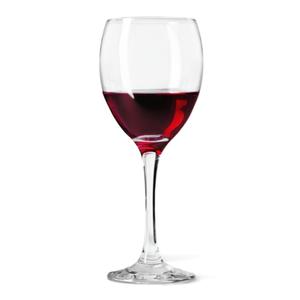One of the most common blood tests performed at health screenings measures the cholesterol and triglycerides levels. Dyslipidemia is an abnormal level of cholesterol and other lipids in the blood. Unhealthy diet habits, lifestyle, genetics and certain health conditions can contribute to dyslipidemia. If left undetected or without proper management, dyslipidaemia will increase the risk of stroke and heart disease.
Understanding dyslipodaemia
A diagnosis of dyslipdaemis is made if blood tests show abnormal levels of the followings:
- High total cholesterol level;
- Low HDL level;
- High LDL level;or
- High triglycerides level
Cholesterol
Cholesterol is a waxy substance found in our cells. Liver produces cholesterol endogenously. The body needs cholesterol to produce certain hormones, vitamin D and some digestive fluids, such as bile. Dietary sources of cholesterol can only be found in animal products such as meat, offals, poultry, fish, seafood and dairy foods. There are two types of cholesterol in our body-low-density lipoprotein (LDL), also known as the “bad” cholesterol, which delivers the cholesterol made in the liver to the bloodstream and deposits the cholesterol in the arterial wall. On the other hand, highdensity lipoprotein (HDL), or, the “good” cholesterol, removes the cholesterol from the bloodstream and carries it back to the liver for metabolism.
Triglycerides
Triglycerides are a form of fats in the bloodstream. They play an important role in metabolism, heat insulation, absorption of fat soluble vitamins, and transportation of fats. High levels of LDL and triglycerides or very low HDL levels increase the overall risk of developing atherosclerosis, where hard, fatty deposits called plagues build up in the arteries. It can thicken the arterial walls, over time reducing the blood flow and causing more severe circulation problems such as heart attack and stroke.
What the blood test can reveal
The blood test looks at the levels of different cholesterols and triglycerides. The desirable results should be within the ideal range:
| ideal range (mmol/L) | |
| Total cholesterol | < 5.20 |
| HDL | > 0.90 |
| LDL | < 3.40 |
| Triglycerides | < 2.26 |
| *Chol/HDL Ratio | < 5.0 |
* Ratio of total cholesterol to HDL cholesterol. A high figure indicates an increased risk of stroke and heart disease.
mmol/L = millimoles/litre, is the unit for measuring fats in blood.
The above figures may vary slightly subject to the laboratory.

Regular aerobic activity is shown to be one of the means to raise the HDL (good) cholesterol.
Manintaining healthy levels of cholesterol and triglycerides
Watching what you eat is essential to the management of dyslipidaemia, in combination with medication if necessary. Diet therapies should always be individualised, therefore, it is important to seek the advice from a dietitian or a doctor.
Below are recommended diet modifications to manage dyslipidaemia:
Lower triglyceridesOmega-3 fatty acids are found naturally in tuna, salmon, sardine, mackerel, flaxseed, walnut, soybean and canola oilAvoid foods such as butter, lard, mayonnaise, fatty cuts or skin of meat, fried foods and full fat dairy products
| Goal | Goal Actions | Recommendations |
| Lower LDL cholesterol | Increase monounsaturated fat intake | Choose foods such as olive oil, canola oil, peanut oil, avocado and nuts |
| Reduce trans fat intake | Avoid foods such as cakes, chocolate, margarine, chips, biscuits and pastry | |
| Lower total and LDL cholesterol | Reduce saturated fat intake | Avoid foods such as butter, lard, mayonnaise, fatty cuts or skin of meat, fried foods and full fat dairy products |
| Increase soluble fibre intake | Choose foods such as fruit and vegetables, oat, wholegrain products and beans | |
| Lower triglycerides | Increase omega-3 intake | Omega-3 fatty acids are found naturally in tuna, salmon, sardine, mackerel, flaxseed, walnut, soybean and canola oil |
| Control alcohol intake | Men: less than two units/day Women: less than one unit/day (Refer to the picture below for actual amount of alcohol in one standard drink) | |
| Reduce refined carbohydrate | Reduce added sugar intake Choose unprocessed whole grains such as barley, oat, brown rice and quinoa instead of refined grain products | |
| Increase HDL cholesterol | Increase physical activity | At least 150 minutes of moderate-intensity aerobic physical activity throughout the week |
| Limit added sugar | Reduce consumption of snacks and drinks with added sugar |

Beer
250ml
5% alcohol

Red wine
150ml
13% alcohol

White wine
150ml
13% alcohol

Spirits
50ml
40% alcohol

Cider
330ml
4% alcoho
Amount of alcohol in one standard drink
Medication dor dyslipidaemia
If diet alone cannot improve the condition of dyslipidaemia, doctors may prescribe medicine that can lower the lipids in the blood, particularly for patients with established cardiovascular disease or those with multiple risk factors. For more information regarding medical treatments for dyslipidaemia, please consult a doctor.
|
Learn more about fatty acids?
|
Articles on this website are informative only and not intended to be a substitute for professional medical advice, diagnosis or treatment. They should not be relied upon for specific medical advice.
41 Mount Kellett Road, The Peak, Hong Kong
t 2849 0111
This email address is being protected from spambots. You need JavaScript enabled to view it.


